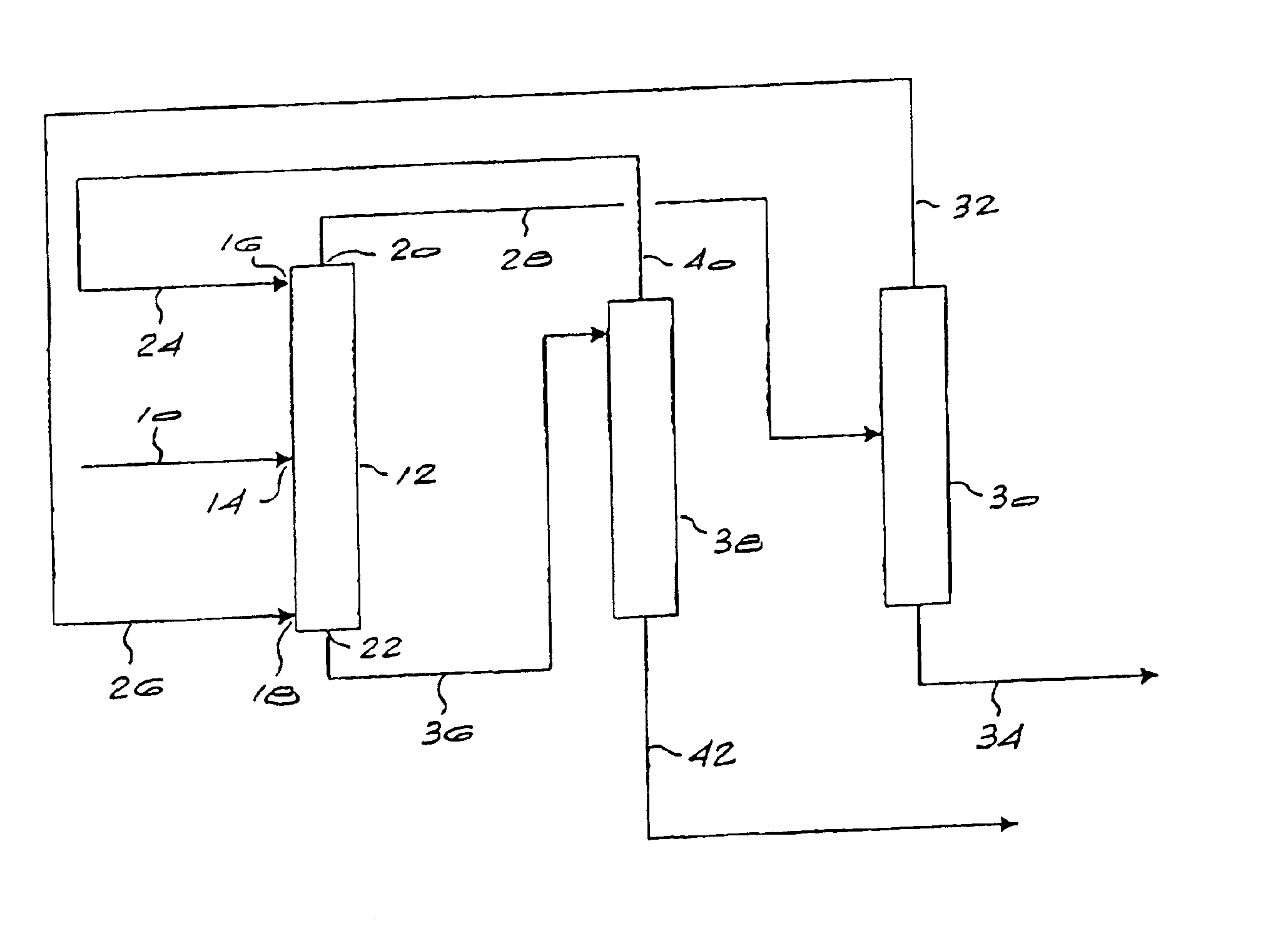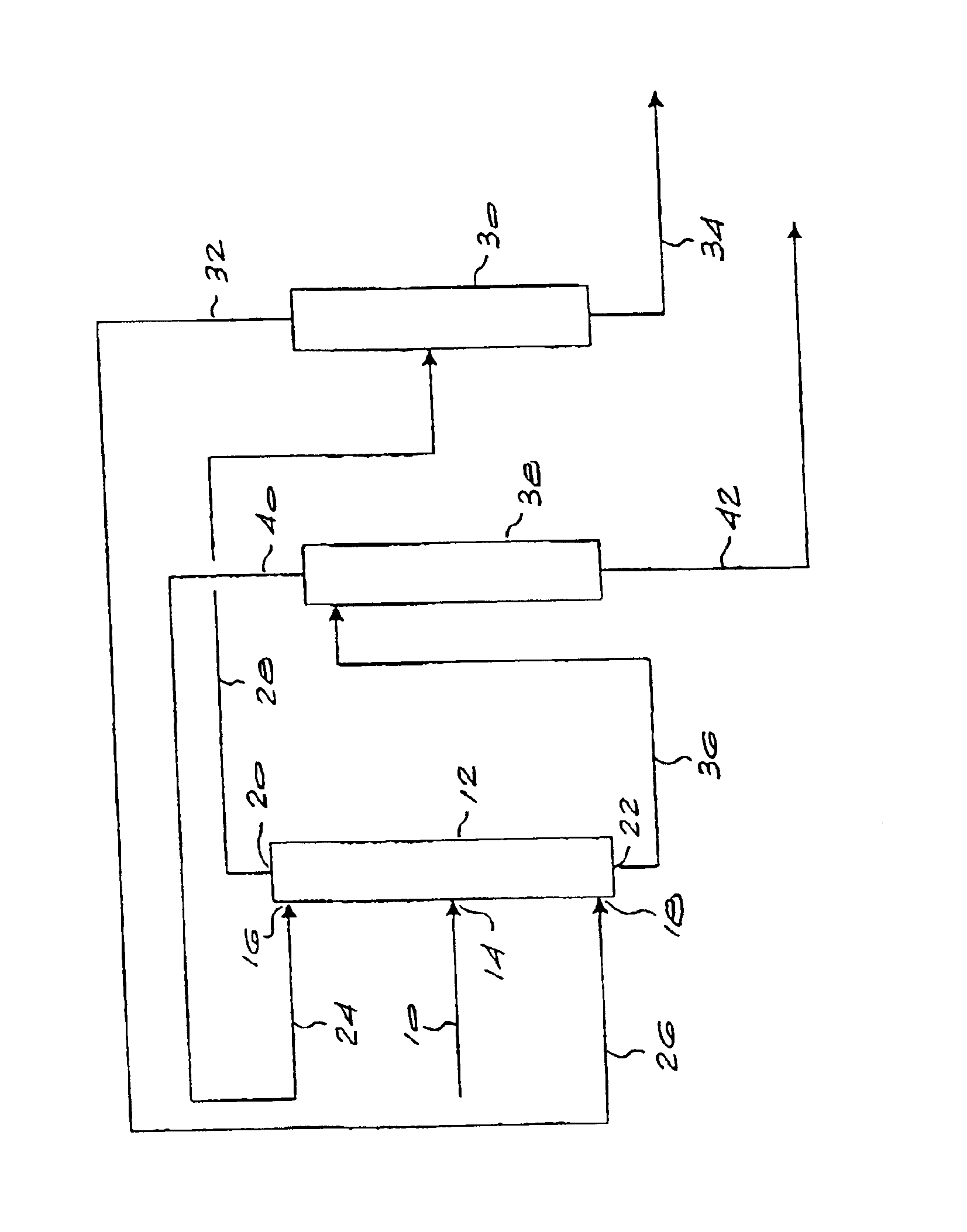Separation of oxygenates from a hydrocarbon stream
a technology of hydrocarbon stream and oxygenate, which is applied in the direction of hydrocarbon distillation, distillation separation, and refining with two or more solvents, etc., can solve the problems of olefins to paraffins, tertiary olefins as a problematic component that cannot be separated,
- Summary
- Abstract
- Description
- Claims
- Application Information
AI Technical Summary
Problems solved by technology
Method used
Image
Examples
example
[0035]A 3 m vertical rotating disc extractor column, which is a multi-stage contacting device, was operated under conditions of liquid-liquid extraction. The column was fitted with feed points at the top bottom, and in-between. The solvent consisted of 18% water in acetonitrile. The solvent was fed at the top feed point at a feed rate of 2 kg / h. The counter-solvent was 1-octene (co-monomer grade). The counter-solvent was introduced at the bottom feed point at a height of 2 m at a rate of 1 kg / h. The feed was obtained from a condensate from a Fischer-Tropsch reaction in a slurry bed using a Fe / Mn / Zn catalyst operated at a pressure of 45 bar and a temperature of 230° C. The extraction operation was executed at 45° C. The solvent formed the continuous phase, and the interface was at the top of the column. For the particular set of accompanying results, the column's rotator was switched off.
[0036]Table 1 below shows the percent, by mass, of paraffins, olefins and alcohols in the hydroca...
PUM
| Property | Measurement | Unit |
|---|---|---|
| operating temperature | aaaaa | aaaaa |
| temperature | aaaaa | aaaaa |
| temperature | aaaaa | aaaaa |
Abstract
Description
Claims
Application Information
 Login to view more
Login to view more - R&D Engineer
- R&D Manager
- IP Professional
- Industry Leading Data Capabilities
- Powerful AI technology
- Patent DNA Extraction
Browse by: Latest US Patents, China's latest patents, Technical Efficacy Thesaurus, Application Domain, Technology Topic.
© 2024 PatSnap. All rights reserved.Legal|Privacy policy|Modern Slavery Act Transparency Statement|Sitemap


